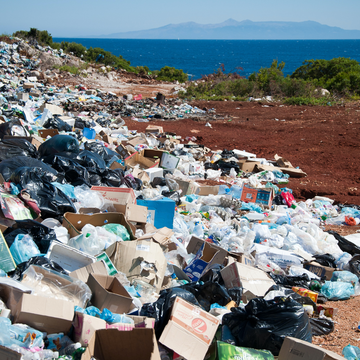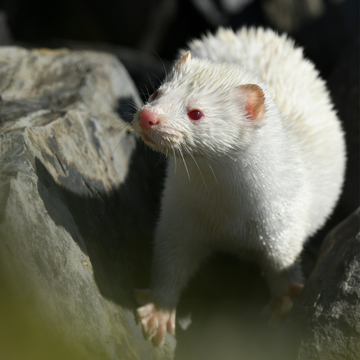Fast fashion is the new paradox in the industry that causes extreme destruction to the environment, manipulates laborers, and harms animals. Fast fashion is all about design, manufacturing, and marketing techniques that rapidly produce high volumes of clothes. Fast fashion production influences trend reproduction and low-quality materials, bringing consumers inexpensive styles.
These cheap, trendy pieces have resulted in overwhelming consumption in the fashion industry. The action harms the environment, workers, animals, and, eventually, the customer's wallet. In this blog, we will explore what is fast fashion and how it is destroying the environment, along with what we can do to slow it down.
A Tragic Reality Check For Fashion:
Previously, shopping was a rare event; people used to buy clothes only for festivals or special occasions. But in the last two decades, the trend has become different. Clothes have become cheaper, the trend cycle has been boosted, and shopping has become a hobby. The ongoing fast fashion and global chains currently dominate high-street fashion and online shopping. But what is fast fashion? Why is it so bad, and how fast fashion is destroying the planet?
It was too good to be accurate, and the stories sold cool and trendy clothes you can buy with your loose change, wear a handful of times, and then throw away. Suddenly everyone could get a new dress similar to their favorite celebrity or wear the latest trend fresh from the fashion shows.
What Is Fast Fashion?
In simple terms, fast fashion can be defined as cheap trendy clothes that sample ideas from fashion shows or celebrity influencers and turn them into garments in high-street stores at speed to meet customer demand. The aim is to get the latest style on the market as fast as possible. So that shoppers can catch them up while they are still at their height of popularity and then suddenly discard them after a few wears. It plays with the idea that garment repeating is a fashion blooper and that if you want to stay in with the ongoing trend, you must carry different looks as they arrive. It creates a vital part of the toxic system of overproduction and consumption that has made fast fashion among the biggest polluters.
The History Of Fast Fashion:
Before the evolution of fast fashion, fashion was slow. People had to source materials like wool and leather, prepare and weave them and make clothes. Afterwards, the industrial revolution introduced new technology like sewing machines. With the help of these machines, clothes become easier, quicker, and cheaper to make. However, dressmaking shops emerged to help middle-class workers. However, most dressmaking shops used teams of garment workers or home workers.

In the 1960s and 1970s, people were developing new trends, and somehow clothing became a form of personal expression, but still, there was a difference between high and street fashion. In the late 1900 and 2000s, low-cost fashion reached its peak. Online shopping and fast fashion retailers like ZARA and H&M overtook the high street. These brands took the looks and designs from the top fashion houses and reproduced them frequently and cheaply.
How To Detect A Fast Fashion Brand?
Mentioned below are a few of the critical factors that are common to fast fashion brands-
- Plenty of styles that go with all the latest trends.
- Short turnaround time between when a trendy piece of clothing is seen on the catwalk and when it hits the shelves.
- In Seaward manufacturing, where workers are the cheapest, they use workers for low wages without enough rights or safety.
- ZARA develops a limited quantity of a specific garment idea. With the new stock arriving every few days, customers know they will miss the chance if they don't buy something they like.
- Low-quality materials like polyester make clothes degrade after a few wear and get disposed of in landfills.
Why Is Fast Fashion Bad?
There are numerous reasons why fast fashion is bad for our planet and all living beings. Moreover, it's high time that people should understand the difference between fast fashion and sustainable fashion and started supporting sustainable living. Below we have discussed some of the reasons that are enough to explain why fast fashion is wrong, and now people must slow it down.
1. Fast fashion is polluting the environment-
The effect of fast fashion on the environment is endless. The pressure to reduce cost and speed up production time means environmental corners are likely to be cut. The negative impact of fast fashion uses cheap textile dyes, which makes the fashion industry one of the largest polluters. Cheap textiles also increase the effects of fast fashion, and polyester is one of the most popular fabrics that are very harmful. Polyester is derived from fossil fuels, contributing to global warming, and can even shed microfibres that add to the increasing level of plastic in the water bodies. The constant speed and demand mean increased stress on other environmental areas, such as land clearing, biodiversity, and soil quality. The process of leather also impacts the environment.
2.Fast fashion exploits workers-
Fast fashion affects garment workers who work in dangerous environments, for low wages, and without human rights. Moreover, the farmers working with toxic chemicals and harsh practices can devastate their physical and mental health.
3. Fast fashion is harming animals-
Animals are highly impacted by fast fashion. In the wild, toxic dyes and microfibers released in the water bodies are ingested by land and marine animals through the food chain to devastating effect. Moreover, animal products such as leather, fur, and even wool are used in the fashion world directly, putting their welfare at risk. The truth is that so much natural hair is being produced under horrifying conditions in fur farms that it becomes cheaper to make and buy than faux fur.
The Rise Of Slow Fashion:
The whole fashion industry is responsible for destroying wildlife and the environment. Moreover, society's obsession with consumerism can be challenging to quit, but there are many other reliable options. Yes, we are talking about slow fashion; if you are thinking, what is slow fashion? We will explain it to you. Slow fashion is considered the best alternative to fast fashion as it includes mindful manufacturing, fair wages for workers, natural materials, and long-lasting garments. It is encouraging to know that many brands, communities, and individuals are supporting the slow fashion movement to save the planet. Many customers are fulfilling their social responsibilities by purchasing clothes and accessories from reasonable and sustainable brands.
The Closing Statement:
In the above blog, we seek to bring awareness about how fast fashion is bad for the world. Fast fashion is destroying and negatively affecting the environment from which animals and humans suffer. But thankfully, with the rise and awareness of slow fashion, consumers now understand what fast fashion is doing with their planet, and somehow they are also surviving its negative impact.
Also You Can Go Through An Amazing information About Fast Fashion & Sustainability: Will the Two Ever Get Along?







